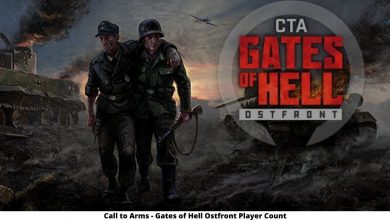Heather O’Neill’s new novel ‘When We Lost Our Heads’ is a tale of two women in Victorian Montreal
Set in Victorian Montreal and riffing off the French Revolution, the title of Heather O’Neill’s latest book “When We Lost Our Heads” immediately provokes a belly laugh.
“It is a fun title,” O’Neill agrees, as we talk on the phone from her Montreal home. But it also sets the mood for something darker, a duality between innocence and darkness, rich and poor, beauty and squalor, that carries throughout the book.
The tension of the book is clear from the start as O’Neill’s two main characters, Marie Antoine – yes, yes, there’s a play on the name of Marie Antoinette — who lives in the Golden Mile and Sadie Arnett, whose family wants to be upper class, face each other in a duel. O’Neill lingers on descriptions of the perfect little bows on their shoes, as they get set to turn around and shoot each other.
“It just kind of starts the book off literally with a bang,” she quips as we chat.
The two girls grow up, Maria Antoine inherits her father’s sugar factory and Sadie disappears into the underworld as working class revolution foments. Along with the title, there are other nods to the French Revolution — one character is named Mary Robespierre, for example.
O’Neill wanted something, she says, that encompasses “the explosiveness of the book and where those women are going and how they’re taking the ideas so far … Exploring where they follow their rage, they follow their impulses, they follow their drives — and they’re so reckless with it.”
O’Neill’s writing voice is instantly recognizable. It’s magical and playful and, because of that, is a foil to the darker elements of the story, reinforcing the tension. It also gives her work a fairy-tale-like quality.
“There seem to be so many female protagonists in fairy tales. And then I read that, actually, in the original collections (the number) was about equal for stories about girls and stories about boys,” she says. But the girls’ stories are the ones that stuck with us. She’s always, she said, found it interesting that the stories featured these plucky girls who run into the ogres by themselves and go through peculiar, dangerous adventures with a sexual undercurrent. “That’s another thing young girls like is a good sexual undercurrent,” she says.
The idea of female sexuality — and, indeed, of female rage and violence — is still terrifying to people. O’Neill runs with it. She wanted, she said, to write a novel that didn’t centre men. But female rage and the #MeToo movement is something else that provides background to the story and why, even though it’s set in historical times has resonance now.
“Especially in the past five years with the whole #MeToo movement, there’s just this feeling that women are psychotic and ruin society if they’re allowed to have a way of somehow expressing their rage and asking for things that bother them to change.”
This is, after all, our world too, she points out, so we shouldn’t have to live within patriarchal constructs. And as we’ve seen over the past number of years, sometimes we have to take things into our own hands.
While O’Neill’s books have always been about class to some extent, this one is different in that the story has a foot in both lower class and upper class worlds, unlike her previous novels, the acclaimed debut “Lullabies for Little Criminals,” Giller-finalist “The Girl Who Was Saturday Night,” and her bestselling and Bailey Prize nominated “The Lonely Hearts Hotel.”
“The emphasis (in those books) was people who had been in such penury and they had to elevate themselves from that,” O’Neill says. Setting this book in both worlds — the worlds of the Golden Mile and the Squalid Mile — allowed her to look at and interrogate ideas such as the difference between class and wealth; and the idea of feminism as experienced or seen from the point of view of women from different classes.
“The aristocratic women are corrupted in their idea of what feminism is because they’re just interested in this Girl-Bossing craziness — where they’re going to attain these illustrious futures that are only reserved for men. So they’re really only interested in their own wealth,” she says.
O’Neill says she wanted to look at these upper class women — “even though they’re totally corrupt” — and the issues they might have been facing. Their lives were proscribed. They had to follow the rules. They were all very well educated “but the point of their education was so they could carry on conversations with men.” Their art forms were trivialized. “They worked with so much embroidery and painting … but their art has all been relegated to this realm of craft,” she says. “I wanted to show there were these wonderful, creative women.”
That contrasts with the women who live in the area she calls the Squalid Mile, such as the character George, who sees the need for women to work together to “dismantle this structure and make it better for everybody, get rid of this patriarchal individualism,” O’Neill says.
The friendship of Sadie and Marie is toxic and destructive on one level, but it’s also about the power of female friendships to change things. As O’Neill points out, it’s also about the power of women creating their own societies. Men have always done that, she points out — we call them old boys’ clubs.
The idea that comes out in fairy tales comes out in other narratives as well. O’Neill was interested in the Victorian period in Montreal and felt that women’s lives during those times hadn’t been explored much. There was, she says, a tension in the times: where women’s behaviour was so proscribed and there were ideas of independence and women’s rights. “I loved the idea of putting these women … in that setting, the juxtaposition would be even wilder and more beautiful.”
On the other side of class, women and young girls during the Industrial Revolution were filling in factory jobs even though, she says, we always have a sense of that these gritty worlds were something that men participated in.
That idea of beauty is never far from O’Neill’s sensibility even when she’s writing about grittiness. Talking about young girls who were hired for those jobs because they were cheaper than hiring anyone else, she says, for jobs that “required a certain nimbleness and tiny fingers … They were able to take this amazing beautiful quality that young girls have where they’re nimble and lovely … and exploit that for capitalist gain. They have this balletlike quality.” And then their fingers get chopped off in the machines.
Her research took her into places where she found spectacular detail. Such as, in the lower classes, “the chance of a baby surviving in the lower class was 50 per cent.” She was able, then, to create a plot around a baby dying without much question around it — but the historical veracity was maintained.
While she invented the term the Squalid Mile, she riffed on something that did exist — the Golden Square Mile. The houses where the factory workers lived, she says, were so shoddily built that they exist only in written descriptions.
***
O’Neill comes from a family of storytellers, with deep roots in Montreal. Her father she remembers as a teller of tall tales, she’s become a writer and her daughter, Arizona, is an artist and storyteller, too.
“That’s sort of what my writing is all about. You get what you get, and you kind of have to steal and make things bigger than what they are.”
Which is what building a world is all about, after all. While she’s written short stories — notably the Giller shortlisted volume “Daydreams of Angels” — and also writes essays, the novel is where she feels most comfortable.
“The novel is such a wonderful beast. It’s such a trunk of so many ideas, and the way you can just go on these crazy tangents of beauty. There’s almost a limitless possibility.”
JOIN THE CONVERSATION
/https://www.thestar.com/content/dam/thestar/entertainment/books/2024/02/04/heather-oneills-new-novel-when-we-lost-our-heads-is-a-tale-of-two-women-in-victorian-montreal/heather_o_neill_window_credit_arizona_o_neill.jpg)





